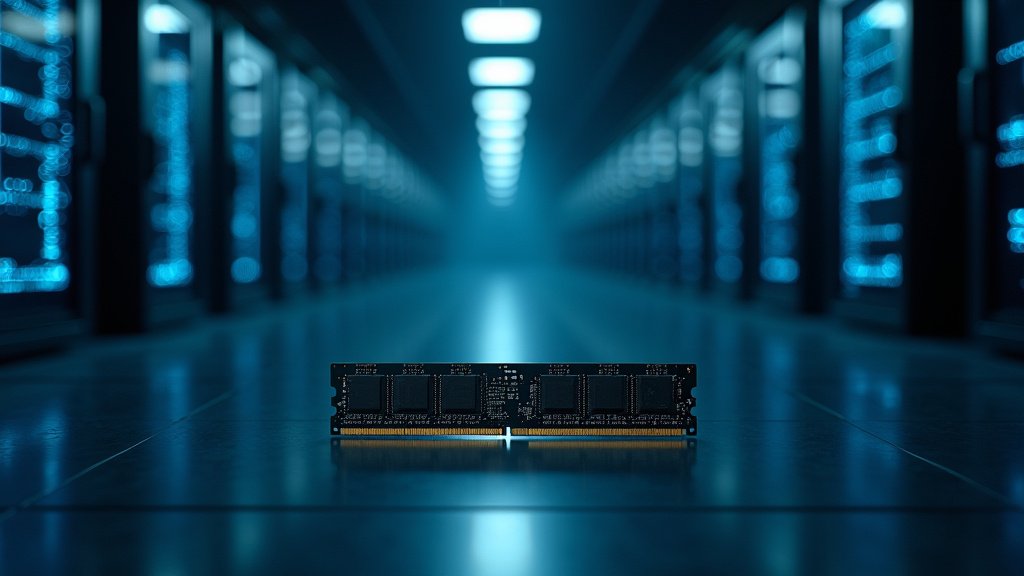TORONTO – Tech leaders gathered at a conference in Toronto on November 20, 2025, largely downplayed concerns of an impending artificial intelligence “bubble” bursting, suggesting that widespread AI Bubble Fears are premature. Speakers emphasized that current AI applications are built on genuine demand and immediate utility, distinguishing the present technological wave from the speculative dot-com era of the early 2000s. Despite widespread optimism about AI’s transformative potential and the significant generative AI growth, analyses highlight significant AI infrastructure challenges, particularly in infrastructure, that Canadian organizations must overcome to fully capitalize on this trending technology and avoid AI Bubble Fears. The current climate has many discussing AI Bubble Fears.
The “Real Need” Argument: AI’s Immediate Value Proposition Amidst AI Bubble Fears
Nvidia’s senior vice-president of networking, Kevin Deierling, was among those who dismissed AI Bubble Fears of a market bubble. He pointed out that unlike the late 1990s, when many internet companies built products without a clear user base, today’s AI sector is driven by tangible needs and immediate artificial intelligence demand from enterprises and governments. “Right now, there’s the demand, there is the need,” Deierling stated, reflecting a sentiment echoed by other industry executives. Francois Chadwick, CFO of Toronto-based tech firm Cohere, likened the demand for AI to a “constant drumbeat,” emphasizing that companies are actively seeking solutions that AI can provide, thus tempering AI Bubble Fears. This proactive approach helps address AI Bubble Fears.
Deierling further suggested that the perceived risks of adopting AI are often overstated, a sentiment that counteracts AI Bubble Fears. He advised companies to start with smaller, internal use cases to realize productivity gains, asserting that “every company is ready to use AI, they just don’t know it.” The expectation is that initial successes in productivity will naturally drive further investment and demand for more advanced AI solutions, countering prevalent AI Bubble Fears.
Navigating the Hype: Distinguishing AI from the Dot-Com Bubble Amidst AI Bubble Fears
While stock markets linked to AI have seen considerable surges, sparking comparisons to the dot-com boom and subsequent bust, many leaders argue that the underlying fundamentals are distinct and not indicative of AI Bubble Fears. Unlike the previous era, where many valuations were based on future potential rather than proven profitability, current AI leaders are often supported by solid fundamentals and generating real profits. The artificial intelligence demand for AI technology is reportedly outpacing supply, necessitating significant capital expenditure in the sector. The persistent AI Bubble Fears in some sectors are not fully reflective of this underlying demand. Understanding these nuances is key to avoiding widespread AI Bubble Fears.
However, concerns about overvaluation persist, fueling AI Bubble Fears. Some analyses suggest that while public markets may have reasonable valuations for leading AI companies, speculative valuations might be more concentrated in private markets, a common concern when AI Bubble Fears arise. Experts also caution against market hype and overpromising, noting that some AI companies are valued on potential rather than performance. The rapid pace of AI innovation, including advancements in generative AI growth, continues to capture headlines and drive investment, making it challenging for some to distinguish between sustainable growth and speculative excess, thus contributing to AI Bubble Fears. The discussion around AI Bubble Fears is ongoing.
Canada’s AI Readiness: A Gap Between Ambition and AI Infrastructure Challenges
Despite the enthusiastic outlook from Toronto tech leaders, a closer look at the Canadian landscape reveals significant AI adoption hurdles. According to the Cisco AI Readiness Index, released in late October/early November 2025, only a small fraction of Canadian organizations—just 8%—qualify as “AI-ready.” This figure represents a decline from the previous year, indicating a growing gap between the intention to adopt AI and the actual implementation capabilities, a key factor in managing AI Bubble Fears. This challenge is a significant aspect of the broader conversation surrounding AI Bubble Fears.
This lack of readiness is particularly evident in AI infrastructure challenges. While nearly three-quarters of surveyed Canadian organizations plan to deploy AI agents, and 34% expect them to work alongside employees within a year, few possess the secure and robust infrastructure required to support these advanced technologies. Key barriers identified in the Cisco report include insufficient compute power, network optimization, cybersecurity measures, and data management capabilities. Specifically, only 15% of organizations have adequate GPUs for current and future AI demands, and less than a quarter can effectively protect AI model data. Data silos remain a pervasive issue, with 85% of companies struggling to unlock AI’s full potential due to fragmented data, a significant contributor to AI Bubble Fears regarding implementation.
The Path Forward: Starting Small and Building Secure Foundations to Mitigate AI Bubble Fears
The insights from the Toronto conference suggest a dual path for the AI sector, aiming to mitigate AI Bubble Fears. On one hand, the undeniable artificial intelligence demand and the immediate applicability of AI solutions are driving innovation and investment, making a broad market collapse less likely than in previous speculative bubbles. On the other hand, organizations, especially in Canada, face critical AI infrastructure challenges and AI adoption hurdles in building the foundational infrastructure and talent pipelines necessary for successful and secure AI integration. The news from the conference underscores that while the technology is advancing rapidly, practical deployment requires overcoming complex operational and security hurdles, which is crucial for alleviating AI Bubble Fears. Addressing these issues is vital to avoid the pitfalls that fuel AI Bubble Fears.
Experts advocate for a phased approach, encouraging companies to begin with internal use cases to build confidence and demonstrate value. As AI adoption continues to be a major trending news item in the technology sector, the focus will likely shift towards how businesses can bridge the gap between ambition and execution, ensuring that the AI infrastructure and security are in place to support the next generation of AI-powered advancements and thus prevent undue AI Bubble Fears. This measured approach is key to long-term success and can help dissipate AI Bubble Fears.





